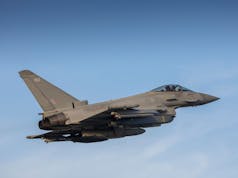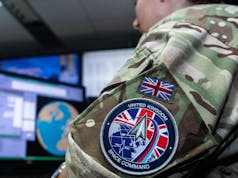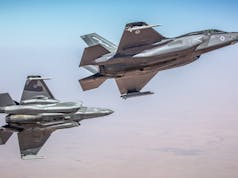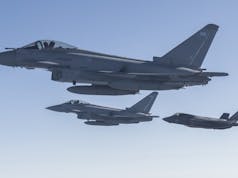The UK has announced the deployment of aircraft to bolster NATO efforts in protecting offshore infrastructure in the Baltic Sea, as part of a coordinated response to growing Russian threats.
The Royal Air Force (RAF) will send P-8 Poseidon maritime patrol aircraft and RC-135W Rivet Joint surveillance aircraft for the NATO-led Baltic Sentry mission.
The move follows the recent damage to the Estlink2 undersea cable between Estonia and Finland, which raised concerns about the security of vital offshore infrastructure.
In response, the UK activated Nordic Warden, an operation designed to monitor Russian shadow fleet activity and safeguard critical infrastructure. The Prime Minister has also held discussions with Estonian and Finnish leaders to coordinate measures against these threats.
The RC-135W Rivet Joint, a dedicated electronic surveillance aircraft, is central to the UK’s effort. According to the RAF, this aircraft is equipped to gather electronic emissions from communications, radar, and other systems, providing critical intelligence to military commanders. Specialists on board, including Weapons System Officers and Operators, monitor the electromagnetic spectrum to assess potential threats.
Used extensively in operations such as Operation Shader, the Rivet Joint has proven vital in intelligence-gathering missions. Although initially named Airseeker, it is universally referred to as the RC-135W Rivet Joint within the service. The UK currently operates three of these highly capable aircraft.
The UK Government highlighted its commitment to NATO’s response, stating, “The UK is playing a leading role in countering the growing Russian threat to offshore infrastructure in European seas.”
The deployment of the P-8 Poseidon and RC-135W Rivet Joint demonstrates this commitment, ensuring that NATO partners are supported in monitoring and deterring Russian activity.













How much life do the RC-135W Rivet Joints have left, they have been incredibly useful. Should we start looking for future replacements so we don’t do what the UK always seems to do and have a capability gap.
I would guess plenty, these examples were the youngest of the surplus aircraft of the USAF reserve KC fleet.
Probably a huge amount. These are based on commercial airlines who have far more intensive use.
I think a lot of airframe life left & frequently updated with kit & IT (systems & threats so IT based now) to keep to the same standard as US & so probably wouldn’t change platforms unless the US did – airframes may be older than Nimrods replaced but lots of airframe life left
You do wonder if a couple more MPAs are in order, 9 is a very limited number considering how much critical areas of sea and occean the Uk has to keep an eye on.
Maybe an MPA version of the beachcoft shadow. Cheep, robust, good range for its size and already in the fleet.
21 Nimrod MRA4.
Reduced to 16, then 12, then 9.
We know the answer to that, regardless of what spin Mod put on it.
Indeed, in reality we should have at least 12 fully focused long range ASW aircraft, then probably another 12 more basic smaller turboprop MPAs for general monitoring of EEZ and infrastructure.
Do we have enough Poseidon and Rivet Joint planes for these tasks though?
Poseidon no.
Rivet Joint, yes.
British military do their job of watching Russian military while Russian military do their job of annoying British military and visa versa.
WTF is the electromagnetic spectrum and can it be weaponised ? 🤷
🫶✌️
This why we should have bought P8 equipped like VP 8. Also why we should buy the MMP enhancement.